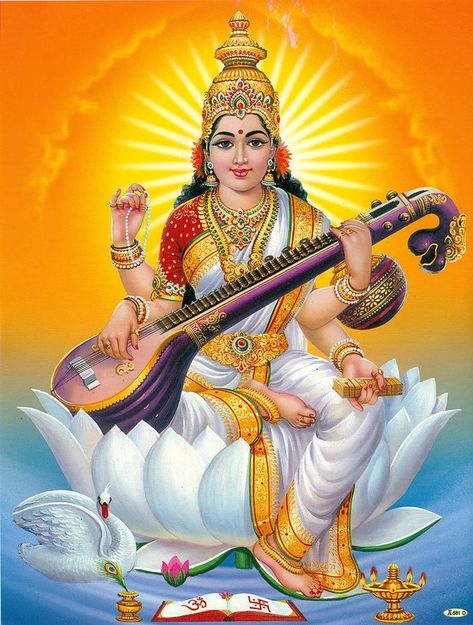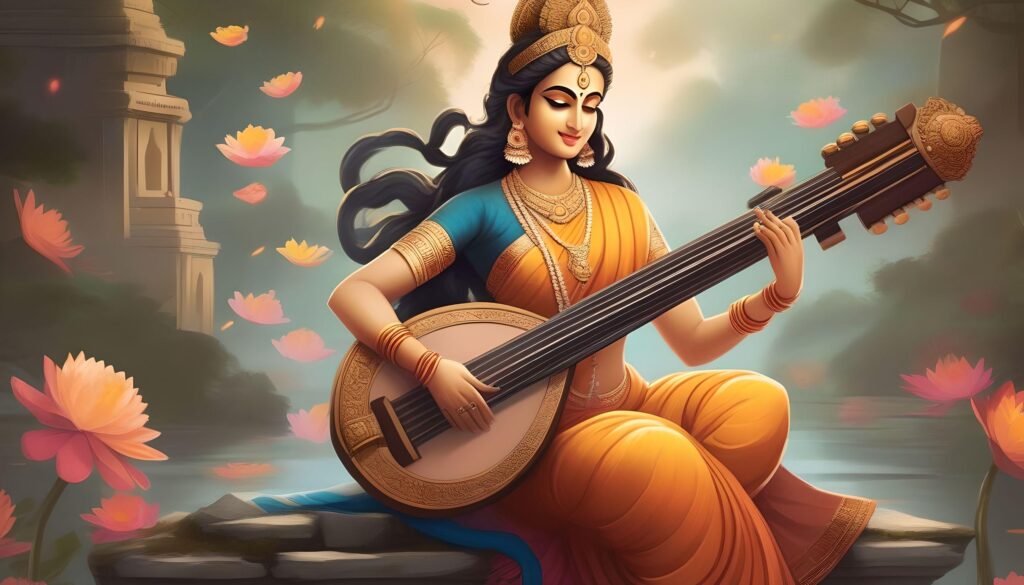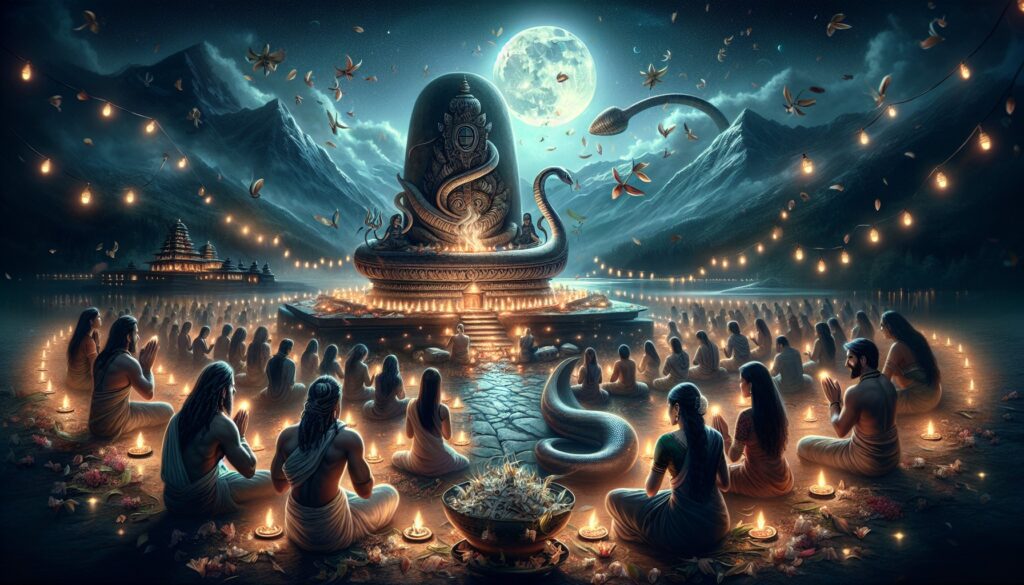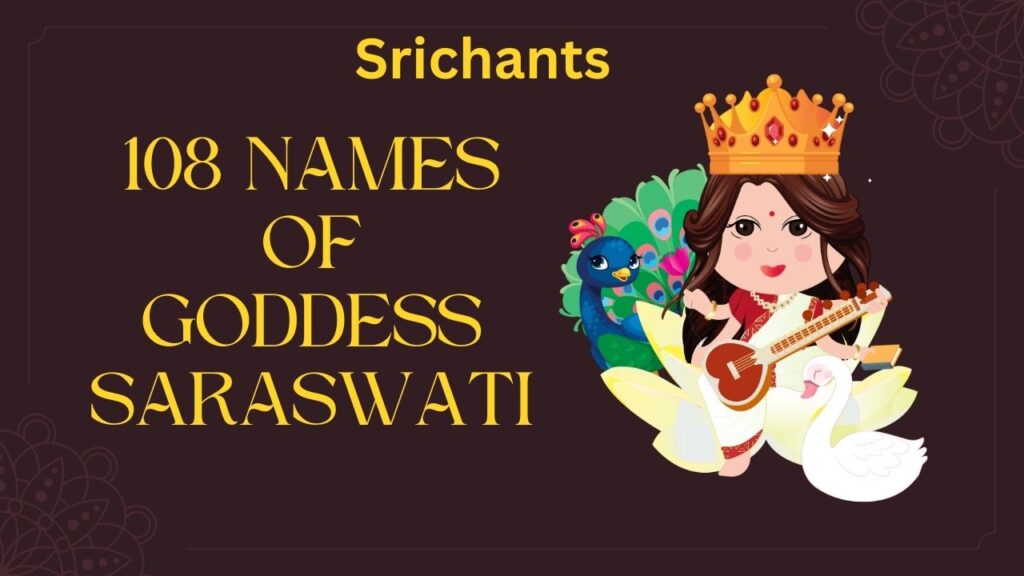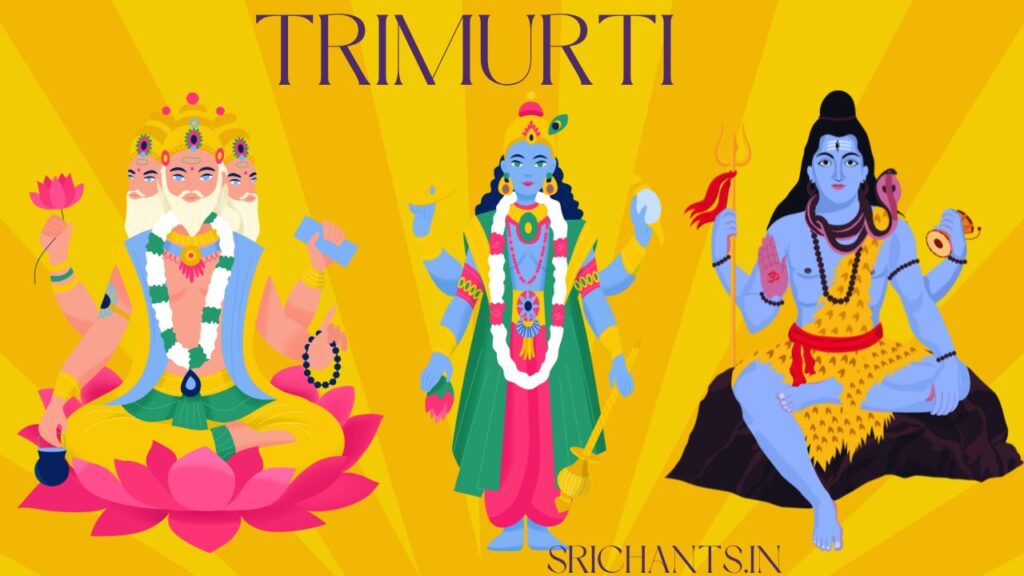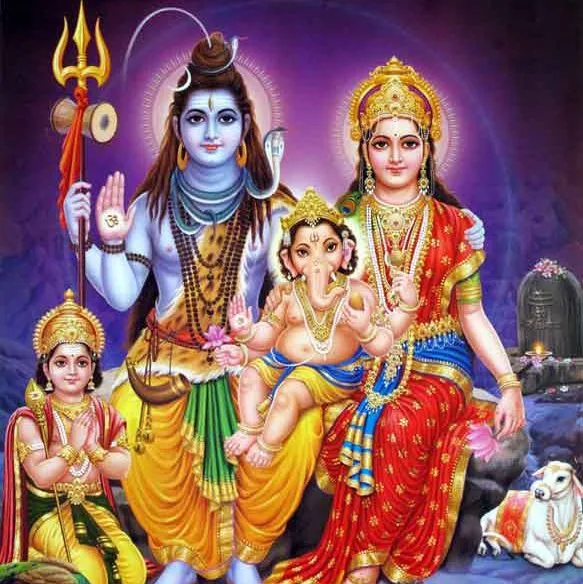Saraswati Deity : Saraswati in Hindu Philosophy & Wisdom
Introduction
One goddess, Saraswati, stands out in the great and finely spun fabric of Hindu mythology as the embodiment of knowledge, learning, and creative expression. Saraswati’s presence permeates the very core of Hindu thought as the divine companion of Lord Brahma, the creator of the cosmos, therefore enhancing the cultural and spiritual terrain with her celestial grace. Saraswati’s influence goes much beyond India’s bounds by means of her numerous expressions, surpassing religious boundaries and enthralls followers all around.
Saraswati’s name has etymological significance.
The name “Saraswati” has great meaning and exposes her celestial qualities’ core. Derived from the Sanskrit root word “saras,” meaning “water,” or “the essence of fluidity,” Saraswati’s name represents the ceaseless flow of knowledge, wisdom, and creativity, like the nouraging waters of a river. The suffix “wati,” which means “possession or embodiment,” emphasizes even more Saraswati’s personification of these celestial attributes.
Saraswati’s Epithets and Multidimensional Personality
Known by many titles and epithets, each emphasizing a different facet of her divine nature, Goddess Saraswati is From the elegant “Bharati” to the learned “Vidya,” the autumnal “Sharada,” to the Brahmic “Brahmi,” these appellations taken together create a vivid picture of Saraswati’s multifarious character. Her relationship with the goddess of speech, Vagdevi, emphasizes her rule over the field of language and expression.
Saraswati’s celestial lineage
Hindu mythology’s fabric is deftly woven with Saraswati’s celestial ancestry. Respected as the embodiment of the creative element of the divine trinity, Saraswati is Lord Brahma’s consort, the creator of the universe, so fostering the development of culture, civilization, and intellectual interests. Her presence is especially enhanced in the Bhagavata Purana, where she is shown as the celestial consort of Lord Vishnu in his Hayagriva incarnation, helping to recover the pilfers of the stolen Vedas and protection of the holy writings.
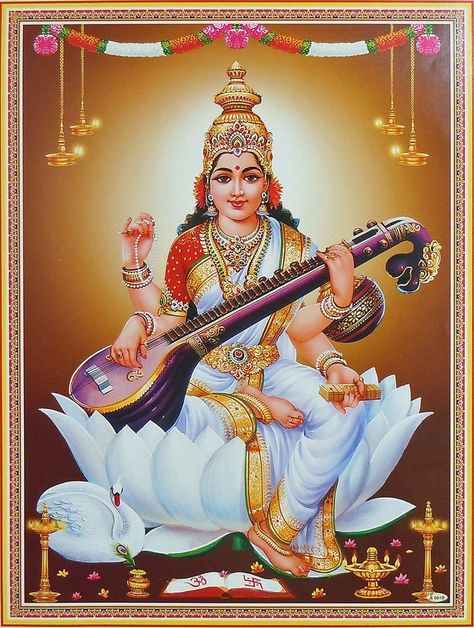
Saraswati’s Appearance in Hindu Writing
From the ancient Vedas to the epic tales of the Ramayana and Mahabharata, Saraswati’s influence penetrates the great swath of Hindu literature. Saraswati is praised as the divine river in the Rigveda, the oldest of the Vedas, therefore representing the primal source of knowledge and enlightenment. With Saraswati’s invocation enabling the sage Valmiki to write the Ramayana and helping the sage Vyasa create the Mahabharata, the epic literature enhances her mythological story even more.
Mahavidya Manifestation of Saraswati and Shakta Tradition
Respected as one of the Mahavidyas, the ten incarnations of the Supreme Goddess, Saraswati is honored within the Shakta tradition—which honors the divine feminine. Representing the lifetime conflict between enlightenment and illusion, Mahavidya Nila Saraswati captures the transforming force of knowledge and the elimination of ignorance.

Parvati and Lakshmi, Saraswati’s celestial companions,
Often accompanying two other well-known goddesses, Lakshmi and Parvati, Saraswati forms the holy triad known as the Tridevi. While Parvati stands for strength and loyalty and Lakshmi for riches and success, Saraswati’s field is knowledge, wisdom, and the creative arts. Collectively, they represent the several facets of the divine feminine and direct humanity toward earthly fulfillment and spiritual development.
Brahma and Saraswati’s Curse: Intervention
In a less-known story, Saraswati curses Brahma saying he will not be revered in temples because he upset her by obsessing over her physical attractiveness. Unlike the many shrines honoring other Hindu deities, this curse is supposed to be the reason Brahma is only found in a few temples. This story shows Saraswati’s contempt of flimsiness and her focus on the search of inner knowledge and spirituality above outward appearances.
Interventions of Saraswati to Save the Cosmos
A legendary account of Saraswati’s divine involvement emphasizes her confrontation with the approaching cosmic catastrophe promised by Lord Shiva’s third eye. Understanding the danger, Saraswati takes the shape of a river and absorbs the flaming beam Shiva’s third eye produces, therefore preventing the terrible catastrophe. Saraswati also vanquishes the terrible monster of doom brought about by Shiva’s wrath, therefore bringing harmony and serenity back into the planet. These episodes show Saraswati’s function as the guardian of cosmic order and the manager of mankind from approaching catastrophe.
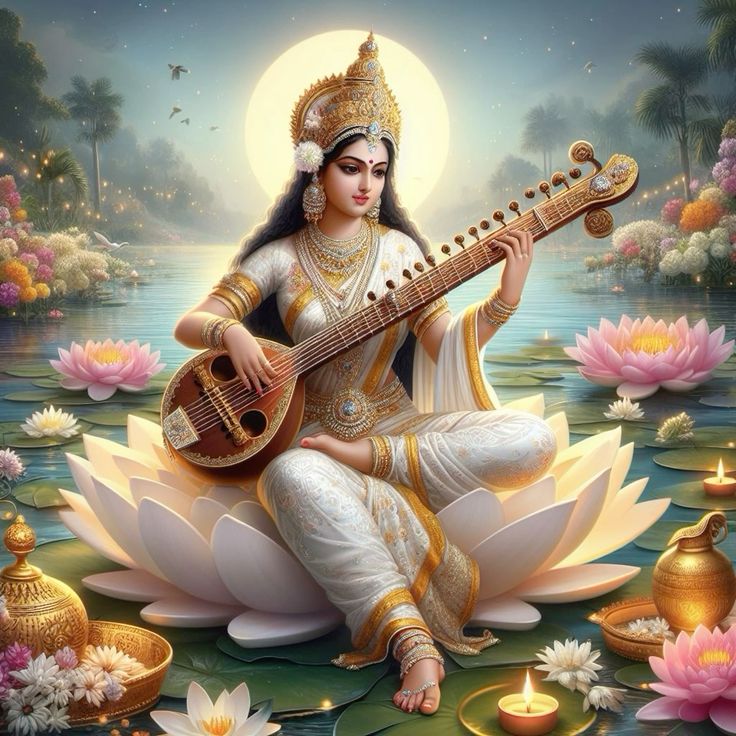
Saraswati’s Iconography and Symbolic Illustrations
Saraswati’s symbolic images and iconography capture her celestial qualities and multifarious character. Often shown riding a swan or seated on a lotus flower, the swan stands for wisdom and the lotus for purity and spiritual illumination. She is a water and river deity. Together, the objects she carries in her four arms—the veena, holy scriptures, rosary, and abhaya mudra—gesture of fearlessness—represent the harmonic resonance of the universe, the storehouse of divine knowledge, the quest of spiritual wisdom, and her kindly protection of seekers of truth.
Saraswati’s Celestial Music: Gandharvas and Other Notes
The myth of Saraswati’s charming the celestial beings—including the Gandharvas—with the enchanted strains of her veena best illustrates her divine relationship with music. Said to have learnt the skill of music from Saraswati, whose melodic compositions reflected the harmonic resonance of the universe and the rhythmic flow of creative expression, the Gandharvas are divine musicians of the heavenly domains.
Manifestations of Saraswati and Avatars
Goddess Saraswati takes several shapes and avatars, each reflecting distinct facets of her divine character and cosmic might. Respected as the ruling deity of speech, scholarship, and the arts, Maha Saraswati, the Great Saraswati, is seen with four heads symbolizing the four Vedas and the infinite swath of knowledge. The Blue Saraswati, Mahavidya Nila Saraswati, shows her strong aspect, signifying the transforming force of knowledge and the annihilation of ignorance. Respected in the Sharada avatar, the goddess of autumn, Saraswati in the Kashmiri tradition also symbolizes the flowering of intellect and the result of artistic activities.

Wearing and venerating Saraswati
Especially among students, academics, and artists, Hindu religious practice revolves around the worship of Goddess Saraswati. Celebrated in the spring, the Saraswati Puja—also known as Vasant Panchami—is a happy celebration honoring her blessings for creative inspiration and scholastic success. Seeking Saraswati’s direction in their search of knowledge and wisdom, devotees present prayers, flowers, and sweets to her idols.
Beyond Hindu custom, Saraswati is adored in Buddhism as Benzaiten, the goddess of the arts, music, and eloquence. Image of Saraswati performing the biwa, a traditional Japanese lute, Benzaiten’s temples draw pilgrims and seekers from all around, so calling her divine grace and inspiration.
Conclusion
In Hindu thought and practice, Goddess Saraswati is the celestial form of knowledge, wisdom, and inventiveness. Her name connects with the continuous flow of knowledge and inspiration, therefore developing the hearts and brains of followers all over the planet. Saraswati encourages people to follow enlightenment and release from the bonds of ignorance by means of her many incarnations and avatars. Saraswati still enthralls and guides humanity on its path towards spiritual and intellectual fulfillment as the divine conductor of cosmic harmony and defender of holy knowledge.
